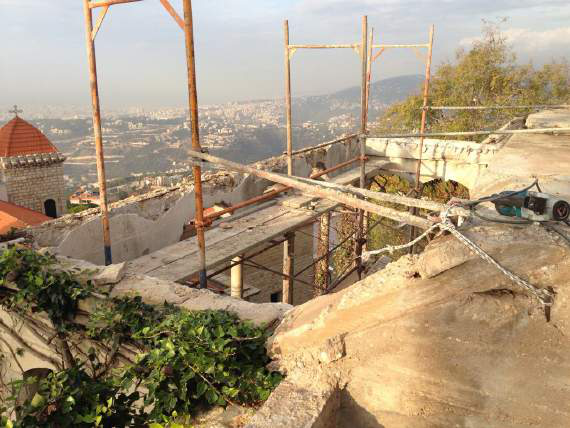Historic Lebanese House Pediment Saved From Ruin
By: Ralph Hage
Tucked away in a scenic Mediterranean coastal town, a historic Lebanese house pediment was recently saved from ruin. The structure, consisting of a pediment supported by five arches, was falling apart after years of abandonment. In fact, the only feature holding the structure together were crawling plants that had intertwined themselves throughout the columns and pediment.
The house was built at the turn of the twentieth century and was renovated in 1974. That did not last however as it was abandoned since the start of the Lebanese Civil War in April 1975. It belonged to Jamil Baroody, the Lebanese diplomat who served as the Saudi Arabian representative to the United Nations from the organization’s first meeting in 1946 until 1979.

In 2019, fearing that the house was dilapidated, Jamil’s nephew, Hiram Corm, decided to restore the pediment. The restoration required a creative approach and was subject to intense scrutiny by the local authorities due to its historical status. The mission was to stabilize and restore the pediment and add a pitched roof to it in order to shield the house below from external climate conditions.

First, the pediment was dismantled and each stone was individually numbered. The arches were then pulled back to be levelled. The first course of bricks above the arches was cut vertically in half with the inside half being removed. Steel reinforcement and wooden formwork were added in the space of the empty interior half in order to create a concrete tie-belt to support the pediment. Concrete was then poured within the wooden formwork and the belt was created. This allowed the brickwork to remain unchanged on the exterior, but supported from the interior. When the concrete tie-belt dried, the pediment was rebuilt exactly as it was previously. Finally, a new pitched roof was reinforced with steel and poured in concrete.
Upon its completion, a local municipality employee stated, “Souk Al Gharb was in uproar when the pediment was dismantled. We thought that the house was being torn down to make way for something new. When we saw that the pediment was being reinforced and rebuilt, we rejoiced!”

source https://csengineermag.com/historic-lebanese-house-pediment-saved-from-ruin/
تعليقات
إرسال تعليق